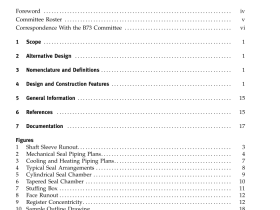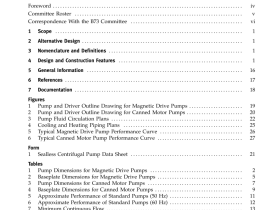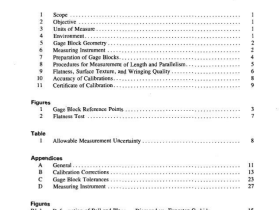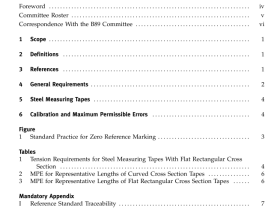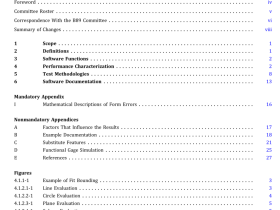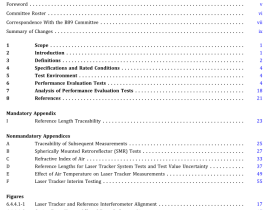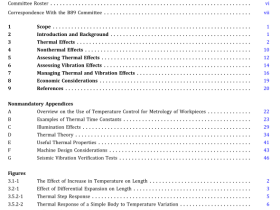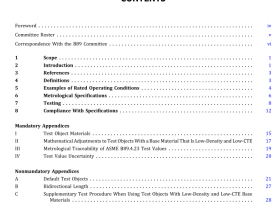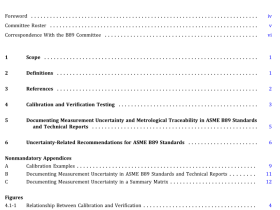ASME B56.5 pdf download
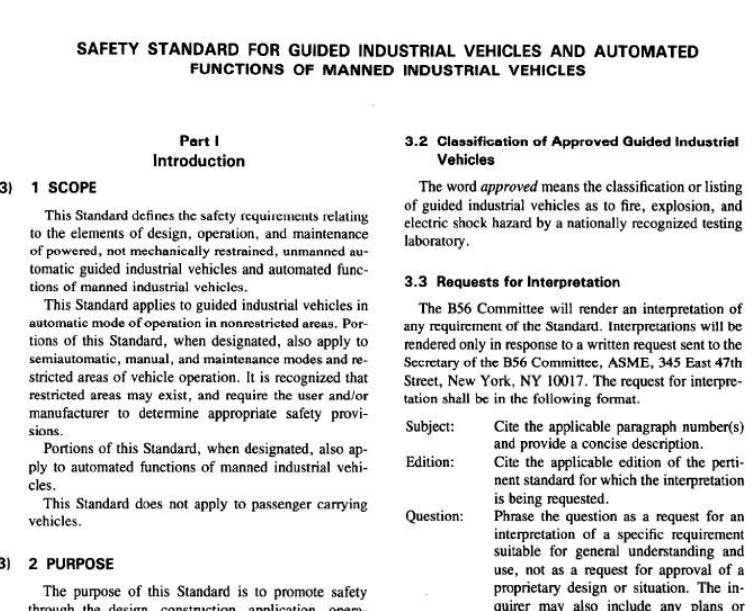
ASME B56.5 pdf download SAFETY STANDARD FOR GUIDED INDUSTRIAL VEHICLES AND AUTOMATED FUNCTIONS OF MANNED INDUSTRIAL VEHICLES
4 GENERAL SAFETY PRACTICES
4.1 Introduction
4.1.1 Before putting a guided industrial vehicle system into service,the user shall be responsible for allfactors affecting the operation and maintenance.as referenced in Part Il of this Standard.
4.1.2 Guided industrial vehicies can cause injury ordamage if improperly used or maintained.
4.1,3 Part Il contains safety standards applicable tovehicle operations. Unusual operating conditions mayrequire additional safety precautions.Guided industrialvehicles which can be operated by manual controls mayhave restricted operational characteristics.
4.1,4 Part IV contains safety standards applicable toautomated functions of manned industrial vehicles.
4.2 Modifications.Nameplates,MarkingsCapacity. and Stability
4.2.1 Modifications and/or additions to hardware orsoftware which affect rated capacity, safe operation,orany emergency control or device shall not be performedwithout manufacturer’s verifiable approval. Where suchauthorization is granted, capacity , opcration, and main.tcnance instruction (plates, tags, or decals) shall bechanged accordingly.
4.2.2 The user shall see that all nameplates and caution and instruction markings are in place and legible.
4.2.3 When utilizing lifting equipment such as clevators, cranes,ship hoisting gear, etc., to relocate aguided industrial vehicle, the user shall assure that thecapacity of the hoisting equiprent being used is not exceeded.
4.24 The user shall consider that changes in load(s).load position(s)or dimension(s),coupling type(s) orposition(s),and foor surface condition(s) or batteryweights may affect rated capacitics and safe operationOnly stable or safely arranged loads shall be handled.
4.2.5 The user shall be responsible for the load stability and retention.When decmed necessary by theuser, verification shall be required.
4.2.6 Some users may decide to establish, for theirown use, stability requirements that will vary from thosein para.8.7.4.However, the requirements in para,8.7.4should serve as a guide for the user, working with the manufacturer, in establishing his own more stringent re- quirements.
4.3 Stopping Distance
4.3.1 The determination of the vehicle’s stopping distance (whether used as a load carrying vehicle or a tow vehicle) depends on many factors, such as other ve- hicle and pedestrian traffic, clearances, condition of the floor, and stability of load(s). The prime consideration is that the emergency braking system shall cause the ve- hicle to stop prior to impact between the vehicle struc- ture and the obstnuction.
4.3.2 Caution should be exercised with changed en- vironments. Changes in weather, surface conditions, or applications may affect the vehicle stopping distance; speeds, loads, brake settings, and/or operation should be adjusted accordingly.
4.4 Sensors If a load exceeds the width and/or length of the vehicle, the user should require that sensors in the direction of travel covering the maximum moving width and/ or length be provided to prevent contact between the load and any obstruction.
